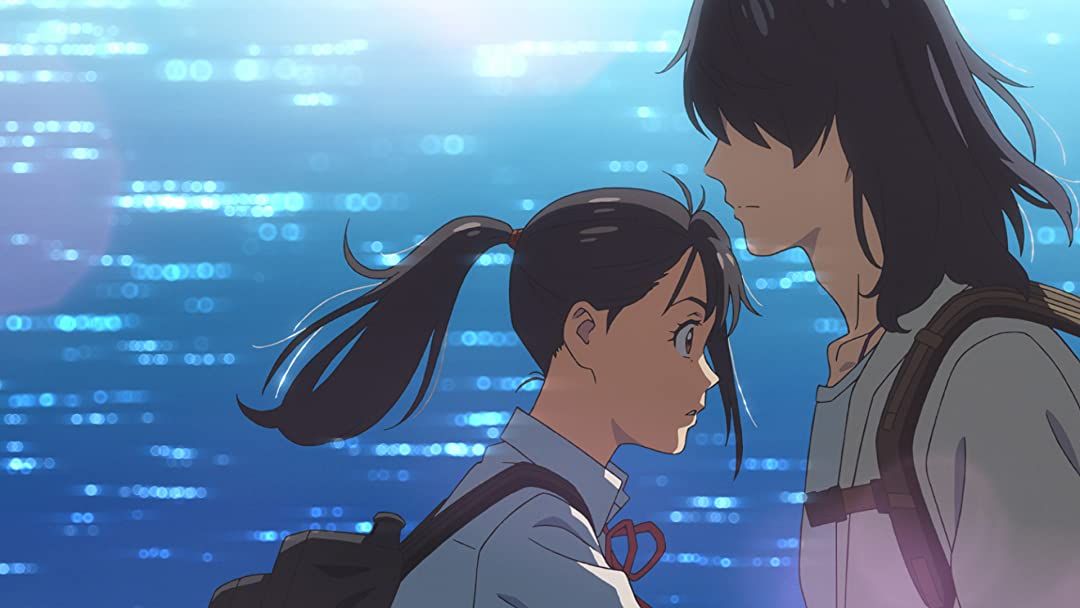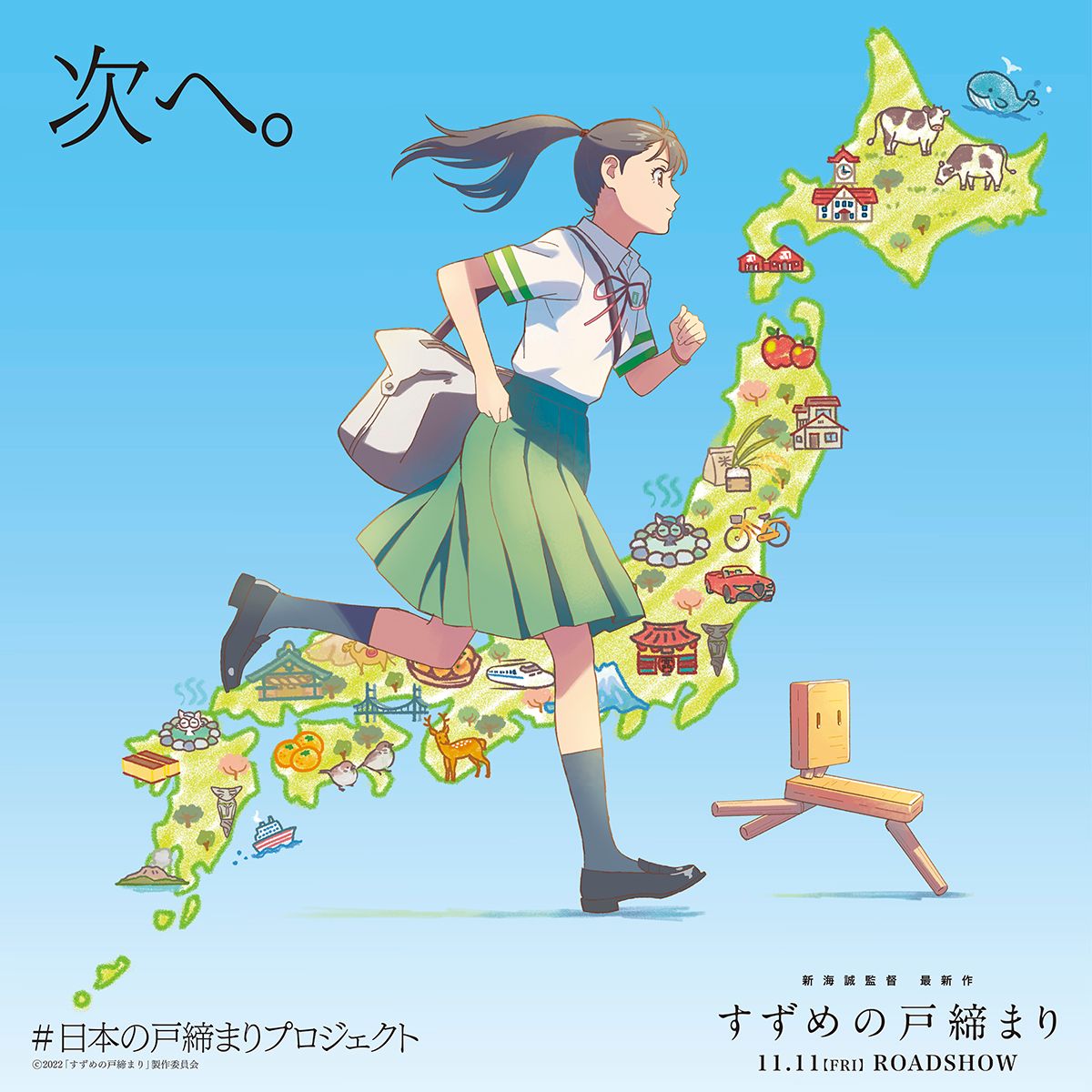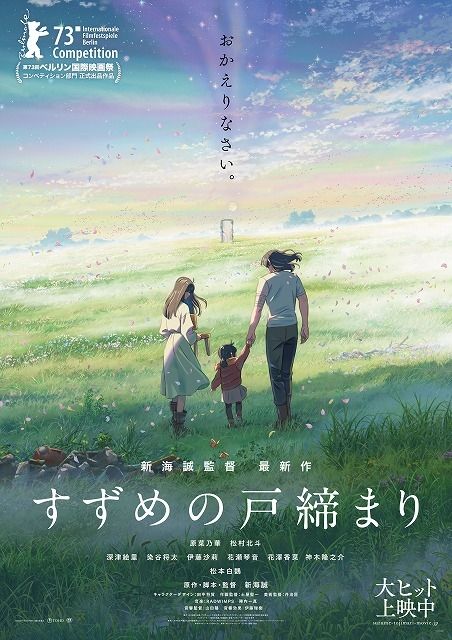
嘎拉嬉皮GALA是生長90年代的女子,美術系出身,阿宅與文青的混血。平時是個Podcaster、藝文工作者及自由撰稿人。最喜歡徜徉於ACG,流行文化還有次文化的世界。興趣廣泛的雜食性動物。如果喜歡請幫我文章下面拍5次手! 一站連結|https://castpie.com/Galahippie319
Suzuya Journey|From the Japanese disaster to Foucault's heterotopia, the secrets hidden outside the ruins
Speaking of Japanese directors, who do you think of? In 2016, Xin Haicheng became famous with the work "Your Name". Talking about Makoto Shinkai may talk about the endless blue sky, campus life, incredible world and Japanese customs. Many new fans may not know that the emotions described by Makoto Shinkai in the past are extremely melancholy. It tells the sadness of the hero and heroine who miss endlessly but cannot meet each other, and most of them end in tragedy. End with a comedic ending after your name, or an open ending. And what kind of story does Xin Haicheng's latest "Journey to Bell Bud" tell? Why is this work so well received by many viewers?

"Your Name", "Children of the Weather" and "Journey to Bell Bud" are also known as Makoto Shinkai's disaster trilogy. From these three works, we can see the inertia of Makoto Shinkai's creation. Maybe some fans think that since "Makoto Shinkai" After "Your Name", Makoto Shinkai's style became more and more commercialized, losing the spirit of niche innovation. The modern animation film environment cannot return to the glory days of the bubble economy in the 1990s. Catering to the tastes of the public is also a means to ensure that the director and production team can successfully produce new works. Makoto Shinkai's consistent plot of female high school students combined with Japanese customs caught the appetite of young Japanese, and even made overseas fans better understand Japanese culture, which is actually a beautiful thing.

"Suzuka's Journey" tells the story of Suzuya, a female high school student, who meets a beautiful man with long hair in her hometown one day. The man's name is Sota, and he asks Suzuya if there are any ruins nearby? In an instant, Ling Ya fell in love with the handsome man in front of him at first sight. Afterwards, Ling Ya came to the ruins to look for the figure of the man, but accidentally saw a door. In front of the door, he saw an endless and beautiful starry sky, and that strange yet familiar figure. He pulled up the stake by the door, but this move was the beginning of the disaster...

The story begins here. The heroine in Makoto Shinkai’s trilogy of disasters has the signature black long hair, wears a uniform, is about the age of middle school or high school, and has a sunny personality. "Suzuka's Journey" tells the story before the middle stage of the story that the hero Sota lost his body because of the minister Kanameshi's curse, and possessed himself on the three-legged chair left by the heroine's mother. The "human chair" started to travel across Japan to find the key stone that needs to be transformed into a cat. The goal is to close the "doors" of the ruins so that the "earthworms" inside the door are not "released".

A closer look at the story told in "The Journey to Suzuya" is very complicated, involving Japanese customs and many proper nouns. This point can start with why Suzuya's journey is called one of the trilogy of disasters? Director Makoto Shinkai is good at hiding unique Japanese culture and mythological stories in his works, such as the witch's saliva wine in your name, the moment of encountering a magic symbol that symbolizes the coming of disaster, and the fall of a comet that destroys the entire town. "Weathering With You" talks about the heavy rain that flooded Tokyo, and the earthworms in "The Journey to Bell Bud" symbolize the earthquake disaster. In addition to earthworms, the ancient Japanese were more convinced that there was a huge catfish hidden in the ground. When he was restless and started to move, it would cause earthquakes. China, on the other hand, describes earthquakes as earth cows turning over. Asian cultures often describe natural disasters as specific animals. The trip to Suzuya is closely related to the theme of the earthquake, which awakened the Japanese's fear of 311.

Doors as Mediators of Heterogeneous Spaces
Second, I want to talk about the place where you hang out: the ruins. Since the gate is the only passage connecting the eternal world and the present world, both the Minister and Sota have said that the eternal world is more like the world after death, the place where things disappear. The ruins used to be buildings built by humans. It may be a hot spring hotel, a home, a school, or an amusement park. These places carry people's laughter and conversation, but for various reasons he no longer serves everyone. , quietly disappeared in people's memory, and also became one of the things that disappeared. That's why Suzuya and Caotai often hear people's conversations when they enter the ruins. Echoing to the end that Ling Ya returned to his hometown and saw the house where he and his mother once lived. In the end, only low walls remained, but have these disappeared buildings really disappeared? Revisiting the old place, Ling Ya remembered that his mother once made a chair for him, which became the most important memory of his childhood. The chair symbolizes the existence of the mother, just as the ruins symbolize the traces of human existence, both of which are unshakable proofs.

French philosopher Foucault put forward the concept of heterotopia (heterotopia). Different from utopia, which symbolizes a distant ideal land, heterotopia symbolizes heterogeneous spaces in reality. These spaces are very close to us, but they are likely to be ignored, such as prisons, mental hospitals, and ruins. In some cities, the above locations may be abandoned for some reasons, or they may be built as another functional space by the local government and interested people. For example, the current major cultural and creative parks may have been abandoned factories in their predecessors. Aren't the ruins and gates in "Journey to Suzuka" part of the urban heterotopia? They are both illusory and real, connecting the past and the present, the eternal world and the present world. What's interesting is that in the trilogy of disasters, they all show the connection of different spaces and the products of the interlacing of different time and space. I wonder if the audience has discovered where these heterotopias take place?
Utopia is an imaginary space (unreal space), sites without place (sites with no place), trying to present society in a perfect form. (Foucault, 1986: 24) Heterogeneous space is a real space with locations, but it belongs to the opposite field (counter-sites), which is "a kind of effectively enacted utopia". It is outside all positions, but it does exist in reality." (Lin Yuling, 2008)
An Alternative Journey Home
The United States is a vast country, and when you think of Route 66, you think of road trips. Road movies have always played a pivotal role in the United States. The journey of Lingya has also joined the plot of the road trip this time. In order to save Sota, Suzume embarks on a journey with her aunt, two cats (gods), and Serizawa who looks like a male publicist but is actually a teacher candidate. And their journey is similar to many road movies, full of unknowns, unknown destinations, and accidents always occur in vehicles. But the destination has not been the focus, the focus is on the various sparks that occurred during the journey. Suzuya and Auntie went from misunderstanding to reconciliation at the beginning, Auntie and Serizawa went from unfamiliarity to understanding, and the relationship between Suzuka and the Minister gradually eased. These three changes were all completed in a seven-hour journey.

Taking it a step further, this is a journey called rescuing Sota, which is actually a journey to find Suzuya . The latter part of the story reveals Suzuya's childhood memories. Ling Ya, who had no father since childhood, was dependent on her mother, but her mother passed away when Ling Ya was young. For a while, Ling Ya couldn't accept that her mother was gone. She ran away from home with a chair, but was trapped in the heavy snow, in a coma. When I was drowsy, I saw the door, and on the other side of the door, I saw a long-haired woman who looked like my mother.
The last paragraph is what I think sublimates the plot of "Journey to Bell Bud". Finally, the director revealed the real body of the long-haired woman. He is not Suzuya's mother, but Lingya herself. When the seventeen-year-old Da and the four-year-old met him again, they reached a reconciliation with the past childhood pain.
Once again, it echoes the meaning of the original Japanese text "The Door Lock of Suzume" 〔すずめの房拉まり〕. The locked door was finally opened. Seeing this, I believe many people are already red-eyed, right?

To sum up, "The Journey of Bell Bud" is an animated film with many elements, including family, love, fantasy, road, Japanese fantasy and other important elements. In fact, simply extracting one of the elements can be used as a complete movie. It is a pity that because of the length of the book, many parts are just touched upon, without further description. Ling Ya's momentary glance and love at first sight turned out to be an important opportunity to change his life. Should it be said that love is blind? Whether it's music or a plot, I will recommend all my friends to go to the cinema to watch Lingya's journey. He thinks about the terrifying details, and the scene is as beautiful as a fantasy. This work is satisfied, and I hope that everyone can unlock the lock in their hearts and see what precious things are hidden outside the door of their hearts.
Welcome to ACG friends to listen to my podcast
https://open.firstory.me/user/galahippie/platforms
Come to IG to chat about animation works
https://www.instagram.com/galahippie/
Like my work?
Don't forget to support or like, so I know you are with me..
Comment…